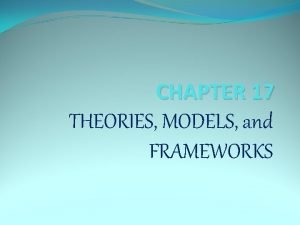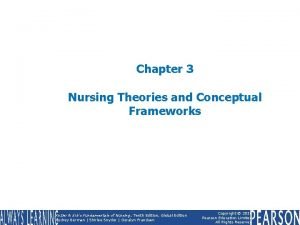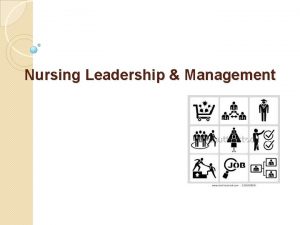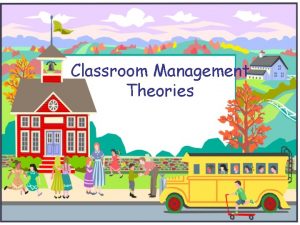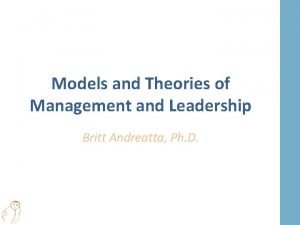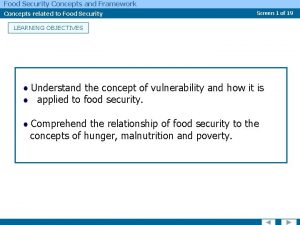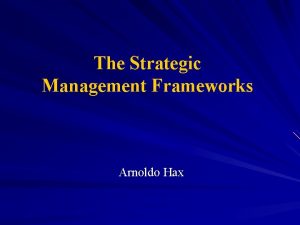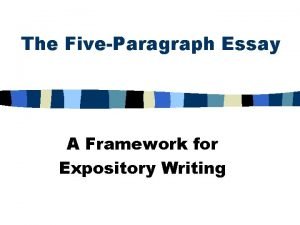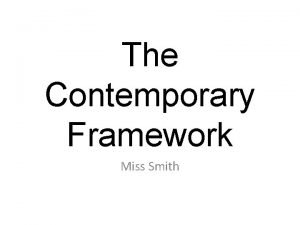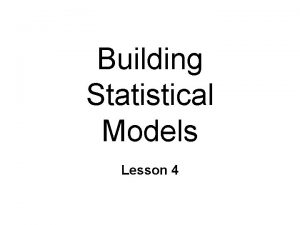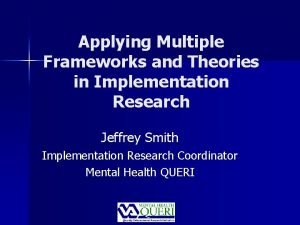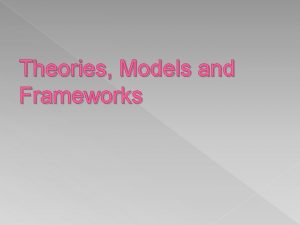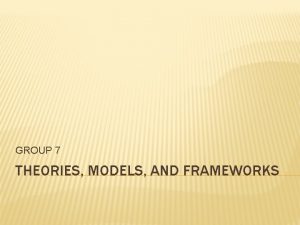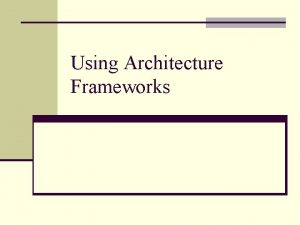Using implementation science theories models and frameworks A














- Slides: 14

Using implementation science theories, models and frameworks: A brief introduction Dr Roman Kislov Manchester Metropolitan University NIHR ARC Greater Manchester r. kislov@mmu. ac. uk Twitter: @Roman. Kislov 15 th July 2021

Research – practice gap Ø Evidence Ø Research Ø Knowledge Clinical practice

Implementation Science as a bridge? Theories, models, frameworks Implementation strategies

Theory …Presents previously accumulated research knowledge about implementation in a way which is: …Can be useful for: • Concise • “Diagnosing” the context of implementation • Structured • Barriers and enablers • Systematic • Suggesting ways of addressing • Generalisable implementation barriers • Processual steps • Mechanisms of change • Viewing implementation (and its components) from different angles • Generating and testing hypotheses and propositions for future research … But is unlikely to provide simple ‘cookbook prescriptions’

Theoretical frameworks to be discussed in this presentation • Generic implementation theories • Determinant frameworks – e. g. CFIR • Process models – e. g. KTA • ‘Classic theories’ with an emphasis on mechanisms of action – e. g. NPT • An implementation framework with a focus on technology - NASSS More on classifying implementation theories, models and frameworks can be found here: Nilsen 2015 https: //implementationscience. biomedcentral. com/articles/10. 1186/s 13012 -0150242 -0

Other things to be discussed • Considerations when selecting implementation theories, models and frameworks for your research project • When to apply theory • Challenges and the way forward • Q&As

Consolidated Framework for Implementation Research • An example of a ‘determinant framework’ • Lists components that need to be taken into consideration • Helps identify enablers and barriers https: //cfirguide. org/

Knowledge-to-Action cycle • An example of a ‘process model’ • Outlines the stages involved in an (idealised) implementation process • Emphases the need to tailor implementation strategies depending on their context • Implementation needs to be sustainable over time… • …Until the knowledge (or innovation) becomes obsolete and needs to be de-implemented Graham et al. 2006 https: //doi. org/10. 1002/chp. 47

Normalisation Process Theory • An example of a ‘classic’ theory • Explains ‘how’ and ‘why’ a phenomenon (implementation) occurs • Draws attention to mechanisms of change required for successful implementation • Aims to bring determinants (enablers and barriers), processes and mechanisms together http: //www. normalizationprocess. org/

NASSS • Combines determinants with some processual elements • Focuses on implementation of technology • Explains non-adoption by ‘complexity’ across multiple domains • Proposed use: Ø Informing the design of new technology Ø Predicting, explaining and learning from nonadoption Ø Planning implementation, scaleup and roll-out of technologies

Selecting a theoretical approach: What to consider • Level of analysis: • Individual behaviour – Theoretical Domains Framework and Behaviour Change Wheel • Groups and organisations – approaches presented above • Your main focus: • Enablers and barriers – determinant frameworks • Implementation stages – process models • Mechanisms of action – classic theories • What approach do you (and your stakeholders) find comfortable? • It is okay (and often highly beneficial): • To combine different approaches • To borrow theories from other disciplines • To refine/modify your use of theory as your project develops

When can implementation science frameworks be used? Lynch et al. 2018 https: //link. springer. com/article/10. 1186 /s 12913 -018 -3671 -z

Challenges in applying implementation science frameworks Frameworks are like toothbrushes: Everyone's got one and no one wants to use anyone else's. . . • Dominance of determinant frameworks in the field of IS – focus on enablers and barriers rather than processes and mechanisms of implementation • Temptation to use theories as checklists • Perception of theories as ‘received wisdom’ that cannot be critiqued or modified • Finding what the framework is telling you to look for – and missing what’s novel in your empirical case

The way forward • Theoretically informative (rather than merely theoretically informed) empirical research • Going back between the empirical data and theory, explaining what the former means for the latter • Uncovering mechanisms of implementation (how do implementation strategies lead to implementation outcomes? ) • Focusing on a fewer number of determinants but exploring relationships between them in depth • What are the key ingredients of success in certain contexts/settings? • How are implementation determinants, processes and mechanisms interconnected? • How does this change over time? Kislov et al 2019 https: //implementationscience. biomedcentral. com/articles/10. 1186/s 13012 -019 -0957 -4
 Nursing informatics theories, models and frameworks
Nursing informatics theories, models and frameworks Nursing theories
Nursing theories Nursing leadership theories and models
Nursing leadership theories and models Industrial location theories and models
Industrial location theories and models Rimland theroy
Rimland theroy Kounin classroom management
Kounin classroom management Management models and theories
Management models and theories What is the difference between model and semi modal
What is the difference between model and semi modal Food security concepts and frameworks
Food security concepts and frameworks Beneficence
Beneficence My favorite subject is pe
My favorite subject is pe Liberta hax
Liberta hax Subtopics in an essay
Subtopics in an essay Non traditional art
Non traditional art Parcc model content frameworks
Parcc model content frameworks
